OLED gaming monitors are all the rage this year. I’ve reviewed nearly all the best of them, and although we’re getting more, I have a pretty good idea about what 2023 holds in this developing space.
And yet, I still haven’t found a display that trounces last year’s Alienware 34 QD-OLED. I’m not going to pretend it’s perfect — I’ve complained about its insistent burn-in prompts in the past, for example. But it’s the gold standard, and as I’ll explain, its strengths go beyond what you can see on a spec sheet.
It’s not a TV, it’s a monitor
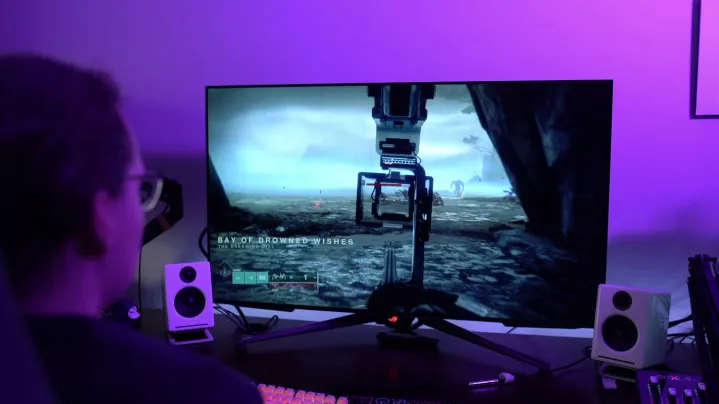
Let’s make this distinction clear right away. The Alienware 34 QD-OLED is a monitor, not a TV. Obvious, I know, but the line is blurrier than you might expect. The Asus ROG PG42UQ, for example, is a great display, one of the best money can buy. But it’s basically a TV, just one that’s more expensive than LG’s C2 while using the same panel and none of LG’s image processing.
You have even larger options like LG’s UltraGear 48 OLED, and calling that a monitor is just laughable. And recently, we’ve seen a surge of 27-inch OLED gaming monitors like the Asus ROG PG27AQDM, finally offering OLED in a form factor most PC gamers are familiar with. It’s not just size, though. The Alienware 34 QD-OLED is a monitor by design because of its 21:9 aspect ratio.

The ultrawide form factor is made for PC. Sure, you can find some content through streaming services that can fill the aspect ratio, but the vast majority of movies and TV shows are standard 16:9. It’s easy to find 21:9 movie files when you’re sat at a desk — I’ll let you figure out how on your own — but more importantly, you can play games and transition into a mult-tasking wizard with a wider screen.
I’ve been a fan of ultrawide monitors for years now, starting with the Massdrop Vast (back before enthusiast audio and keyboard brand Drop was, well, Drop). It’s a form factor uniquely positioned for PC gamers, pulling double duty as a highly immersive experience while playing games and offering extra screen estate when you need to get some work done. It’s perfect, and I love it.
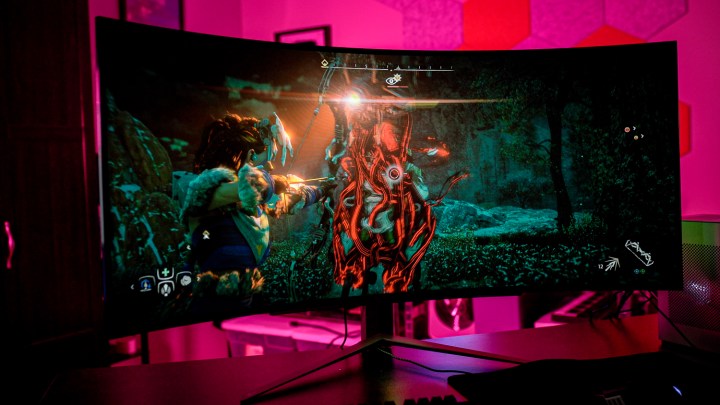
Don’t get ahead of me, now. I know the Corsair OLED Flex and LG UltraGear OLED 45 exist, and that both are ultrawide monitors in their own right. There are a couple of problems here, though. For starters, they’re both massive and better-suited for gaming than getting any work done. And they’re expensive, costing around twice as much as the Alienware 34 QD-OLED.
And above all else, that’s the element that sells the Alienware 34 QD-OLED for me: the price.
A great value
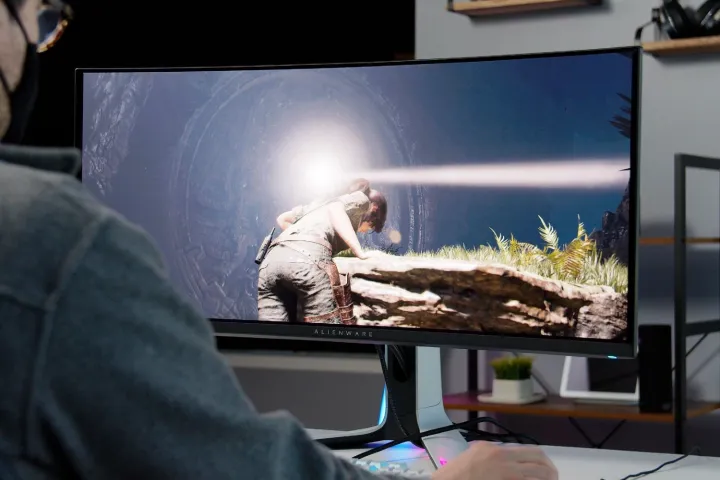
If you’re not familiar, there are only two companies making OLED gaming displays right now: Samsung Display and LG Display. They’re technically separate companies from LG and Samsung, respectively, but we don’t need to get into all of that right now. What’s important is that, if you buy an OLED gaming monitor at this moment, the panel is either from LG or Samsung.
So displays like the MSI MEG 342C, Samsung Odyssey G8 QD-OLED, and Acer Predator X34 V are all using the same QD-OLED panel. They’re all using the same QD-OLED panel as the Alienware 34 QD-OLED, in fact, the Samsung QMB340CD01-C03.
All of the other alternatives are just more expensive. In a comedy of errors, Samsung decided to release its take at $1,500, $500 more than you can buy the Alienware 34 QD-OLED for right now. The Acer Predator X34 V isn’t even out yet — it’s arriving in November — and it’s launching at $1,300. The only monitor that’s close is the MSI MEG 342C, which is a display that’s been out of stock since it launched.
Dell isn’t just undercutting the competition. The Alienware 34 QD-OLED has enjoyed nearly a year of a head start on the market, and in that time, Dell has released both a G-Sync and FreeSync version and cycled it through several sales. You’ll commonly find it for $1,000, and even if you can’t find it at that price, I’ve never seen it go above $1,100.
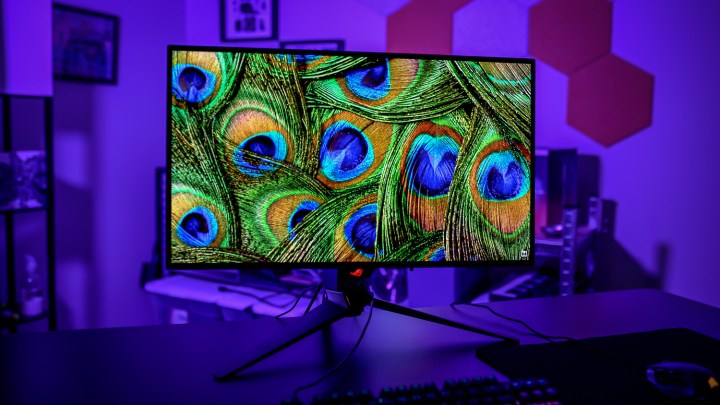
Naturally, the larger monitors I mentioned in the section above are more expensive, too. What really sells the Alienware 34 QD-OLED, though, is how it compares to the LG UltraGear OLED 27 and Asus ROG Swift PG27AQDM.
Both are 27-inch 1440p OLED displays that cost $1,000. They have a slight advantage with a 240Hz refresh rate versus the Alienware’s 165Hz refresh rate, but we’ve never been in a time where an ultrawide display sporting similar specs was competing with a standard 16:9 display for the same price. That refresh rate difference isn’t as big as it sounds, either — realistically, it only accounts for around 2 milliseconds.
A smorgasbord of goodies
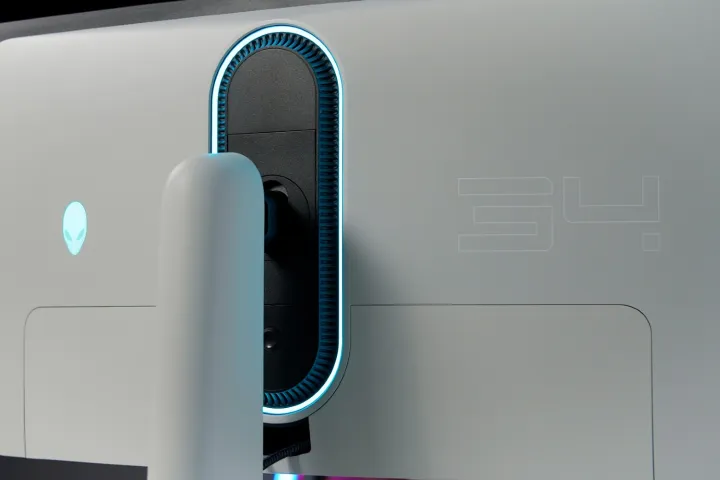
Let’s finish this out with a couple of smaller details. First, USB ports. Most monitors, including all the LG displays I’ve mentioned and the Asus ROG Swift PG27AQDM only include two. The Samsung OLED G8 includes only a single USB-C port for some bizarre reason.
The extra ports help, for sure, but it’s their positioning that matters. You have two behind the monitor (near the HDMI and DisplayPort connections) if you want to connect same static peripherals, but the other two are under the front of the monitor so you can swap devices in and out. It doesn’t seem like a big deal, but the annoyance of constantly reaching behind my monitor and struggling to find the USB ports has led me to universally ignore USB hubs on most gaming monitors.
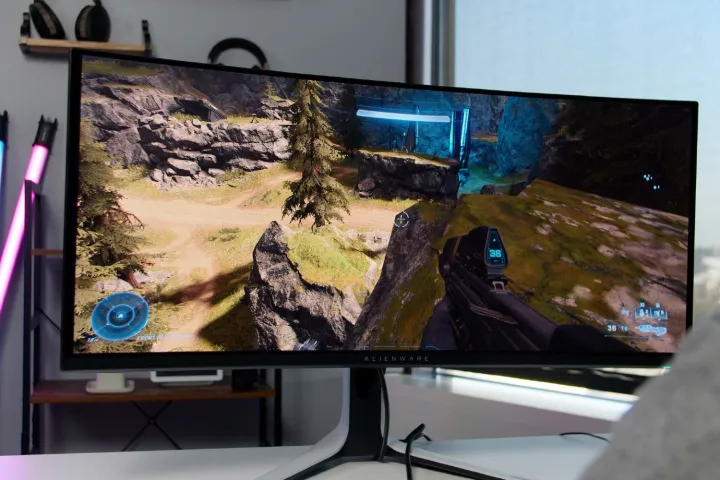
And secondly, the glossy finish. The hysteria around matte finishes on OLED displays is a bit overblown, but there’s still some value to having a glossy finish. Colors pop more, and if you use proper diffusion, reflections aren’t too bad. That’s the case for the Alienware 34 QD-OLED, while the LG UltraGear OLED 27 and Asus ROG PG27AQDM opt for a matte finish that doesn’t look quite as impressive.
If you single out any individual element of the Alienware 34 QD-OLED, it’s easy to write it off. It’s the combination of features and price that make it such an attractive display, even over a year after it released. I’m sure we’ll see some more exciting monitors throughout 2023, but for now, last year’s Alienware 34 QD-OLED reigns supreme.




